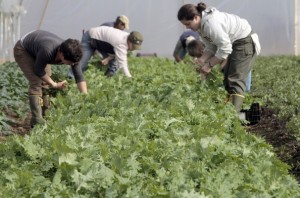“I aimed to go zero carbon, yes, but also zero waste in the ground, zero pollution in the air, zero resources sucked from the earth, zero toxins in the water. I didn’t just want to have no carbon impact. I wanted to have no environmental impact,” Colin Beavan said.
Beavan, also known as the “No Impact Man,” has been described as being a “liberal schlub who got tired of listening to himself complain about the world without ever actually doing anything about it,” according to New York City publications. However, I consider him a courageous individual who wasn’t afraid to make a difference in his community. In 2006, Beaven, along with his family, embarked on a yearlong experiment to live in the heart of New York City with as little environmental impact as possible.
The purpose of the project was to devise new ways of living that offer mutual benefits to its participants and the environment. It brought to light the numerous environmental issues that many are either unaware of or choose to ignore. He addresses food, the availability of drinkable water, climate change, sustainable energy and the change of environmental policy.
For the next year, Beavan operated in waves to eliminate harmful habits that are detrimental to the surrounding environment. First on his agenda was to figure out how to live without producing so much trash. According to the Clean Air Council, “Every year, Americans throw away enough paper and plastic cups, forks and spoons to circle the equator 300 times.” The experiment called for an immediate halt on the use of disposable products and pre-wrapped goods. Colin and his family opted to buy fresh produce from farmer’s markets, where having the option for non-wrapped goods is more frequent.
Stage two included finding out new ways of transportation that didn’t release harmful chemical emissions into the atmosphere. This included cars, trains, buses, planes and even elevators. The third and final stage of the No Impact experiment involved making as little environmental impact when it came to consumer purchases; that meant saying goodbye to household energy and water usage.

Being a very impressionable person, I was moved by Beavan’s dedication to make a better world for younger generations to come, so much so that I immediately researched similar campaigns that were applicable to a college campus. To my surprise there was one.
The University “No Impact” project is a “one-week program designed to boost motivation and interest in sustainability, build community and create positive change,” according to the project’s website. Instead of the usual “whistle blower” approach that most Go Green programs utilize, this one offers guidelines almost identical to what Beavan created. These guidelines include:
• Sunday: Consumption
Don’t buy anything new (except for food!)
• Monday: Trash
Don’t create any trash.
• Tuesday: Transportation
Only transport yourself through environmentally friendly ways, such as biking, walking, public transportation or carpooling.
• Wednesday: Food
Only eat local food and cut down on your meat consumption.
• Thursday: Electricity
Cut back on your electricity use or stop it all together.
• Friday: Water
Cut back on your water use.
• Saturday: Giving Back
Give back to your community.
• Sunday: Eco-Sabbath
Unplug and reflect. You and the environment take a break.
Of course the program includes activities to gain a positive morale across the campus that contains documentary screenings, arts/crafts projects and much more. Beavan’s main goal was to bring awareness that consumerism in America needs to be controlled. So far our efforts to make the public aware of their actions has been so-so and a true act of change is still in need.
We, being the pioneers for the next generations of scientists, lawmakers and activists, need to take control of our bad habits and change for the better. College students hold the power for a sustainable environment right at their fingertips — all it takes is an ounce of inspiration.






